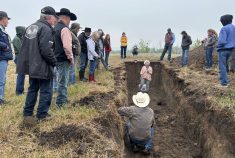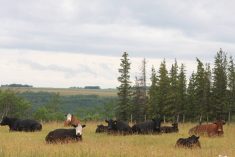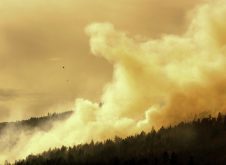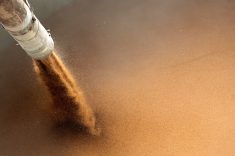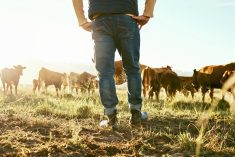After 18 years, we are crawling out of BSE purgatory, having been deemed “negligible risk” by the World Health Organization (OIE). Unfortunately, drought has bookended the BSE period for many beef farmers and ranchers.
For me, the onset of BSE has always been linked to the drought of 2001 and 2002. The second year of the drought was dramatic in my hometown, as a machinery operator unintentionally sparked a forest fire on the northwest side of Turtle Lake. That spring, the fire burned several cabins and two or three homes on neighbouring Thunderchild Reserve, and threatened farms, ranches and acreages. Many locals fought the fire for days, along with water bombers and fire crews. Perhaps because of that fire, everything seemed awful that year. In my memory, the grass hardly greened up before dying, dust hung in the air, the bears were made bold by hunger and everyone was cranky.
Read Also
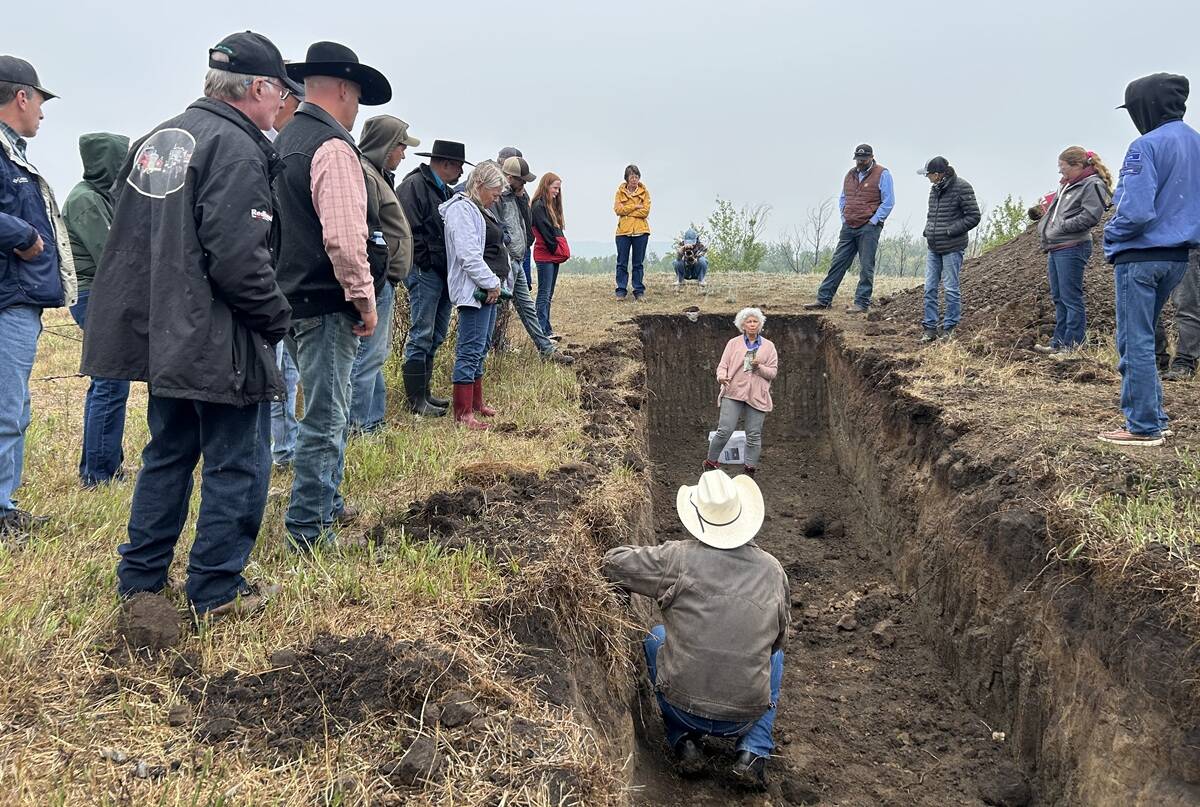
Improving soil health on the ranch
Yamily Zavala, PhD, talks soil health for farmers and ranchers at a grazing club field day at Paradise Hill, Saskatchewan.
That drought was just the beginning of tough times for farmers and ranchers. In May 2003, BSE was found in a cow in Alberta. Even though people knew it was a risk after the fiasco in the U.K., it still came as a shock to many.
“We got notification before it was publicly announced that there was a case of BSE in Canada. And it was so hard to believe. We sort of talked about this before it ever happened, but when it happened it was just — it couldn’t be, couldn’t be. It took a couple of days for it to sink in, and then when it did, my stomach got into a knot and it just stayed that way,” Marilyn Jahnke, then the president of the Saskatchewan Stock Growers Association (SSGA), told Thelma Poirer on June 30, 2003. Poirer had interviewed Jahnke for a book titled A Voice of Her Own. Jahnke’s husband, Neil, was the president of the Canadian Cattlemen’s Association (CCA) at the same time she was at the helm of the SSGA.
Things piled up quickly once the borders closed. “Everything is full — the processing plants, the coolers are all full — and I know some of them have beef stored in reefer trucks,” said Jahnke.
One factor in the industry’s favour was the traceability program. “We needed that after the fiasco in Great Britain and we didn’t want an ID program imposed on us by government. We wanted an ID program that we could work with, and that’s ear tagging.”
There was an expectation, or at least a hope, that exports would get back to normal fairly quickly. A Western Producer article published December 25, 2003, mentions the push to be classified by the OIE as a “minimum risk nation,” as we’d only had one BSE case at that time.
“The frustrating thing, obviously, is the current rules don’t treat countries differently that have put in place the proper risk mitigation measures from those that have not,” said Dennis Laycraft, at that time the executive vice-president of the CCA. “We all fall into the same pit of purgatory.”
The U.K. at that time was “seeking moderate risk status of 200 cases per one million head per year,” Barbara Duckworth wrote for the Western Producer. They were finding more than two BSE cases per week in their surveillance system, she added, and all cattle over 30 months were “tested and incinerated” so they wouldn’t enter the food chain.
We know now that that first cow wouldn’t be our only BSE case, but we’d never come close to the numbers in the U.K. Dena Weiss, an accountant with MNP who also ranched with her family at Maple Creek, was also interviewed for A Voice of Her Own. A 2004 addendum to her June 2003 interview notes that the initial shock of finding a BSE-infected cow had worn off.
“Ranchers on the whole are discouraged. I see some extreme pessimism out there, but they are trying to hang on. Many cattle producers are keeping their cull cows and continuing to breed them, hoping for the U.S. border to reopen. Even if that happened immediately, it probably wouldn’t help our cow markets until far into the future … I have reports of people shooting their cull cows and cull bulls. These animals still qualify for BSE testing. Canadians are now attempting to rebuild a solid infrastructure so we can handle mature animals, but this takes time and lots of capital.”
A few more cases trickled in over the years, just enough to trap us in BSE purgatory for a generation. Eventually, we’d see 19 in Canada total, plus the Washington cow. One positive that is sometimes forgotten is that domestic consumption rose after BSE, as Canadians showed their support for farmers and ranchers with their wallets.
The industry persevered through BSE, eventually achieving controlled risk status, and now this spring, negligible risk. Hopefully, we can turn that into more market access and fewer costly regulations for the processing industry.
It seems we have come full circle — as in one of the circles found in Dante’s Inferno. The morning I finished writing this, I read a Globe and Mail article stating Alberta expects to pay about $1 billion in ag insurance, comparable to the 2002 drought. Some of the Twitter photos I’ve seen in parts of Manitoba are apocalyptic, B.C. is on fire and Saskatchewan, Alberta and parts of Ontario are parched, too.*
Nobody (credible) has ever said farming and ranching is easy. We all know that. Nor am I writing this to make anyone (more) miserable about the current drought or to express pity.
But I just want to acknowledge that much of the last 20 years were, frankly, hellish. We’ve seen many beef producers leave and many acres converted to crop, and there are real concerns this drought will trigger another round of industry exits. Beef producers have faced several disasters and the long grind of BSE’s after-effects. That’s a lot of cumulative stress over the years.
Hang in there, and don’t be afraid to ask for whatever type of help you need. People are rooting for you.
*Updated to include Alberta in this list of drought-stricken areas. My apologies for originally leaving Alberta out (a hazard of writing close to deadline).




